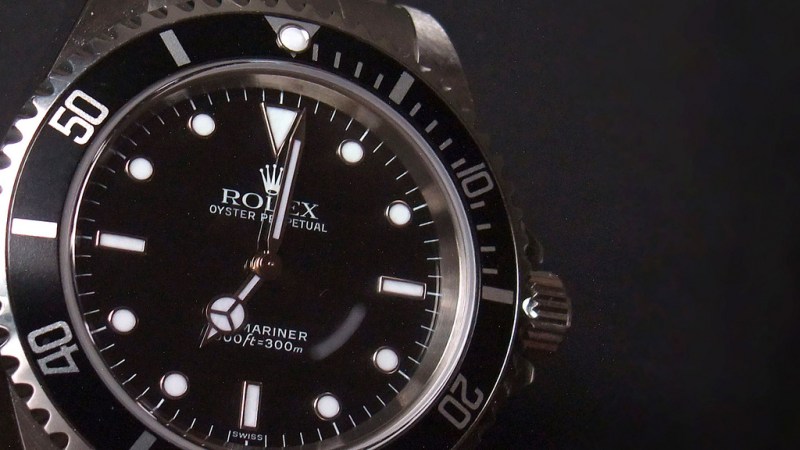As crime continues to evolve, so do the methods used to fight it. Tapping everything from luxury timepieces to lasers, take a look at a growing list of luxury and high-tech items used by law enforcement to find key evidence and put criminals behind bars.
Rolex Helps Pin Down Identity-Stealing Murderer

As RealClearLife has written about before, Rolex’s immaculate record of purchases and service dates helped identify the body—and killer—of a man wearing a waterproof Oyster Perpetual after his body was caught in a fisherman’s netting in the English Channel in 1997. The victim was Ronald Platt, and thanks in part to the Oyster’s multiple-day power reserve, authorities were able to narrow down the exact date that Platt was murdered. Albert Johnson Walker, a man who had assumed Platt’s identity after embezzling millions of his clients’ money, is still in prison for the killing.
California Manslaughter Case Solved by NASA Tech

NASA’s Payload Directed Flight research group helped convict Bernardo Bass of murdering his girlfriend, Dawn Sanchez, after she went missing from a motel in Los Altos, California, in 1991. Though no body, weapon or sign of a car were found, Insider reports that the NASA team was enlisted to help after investigators received a tip that evidence related to the slaying was buried in a vacant lot. It was too expensive to excavate the entire area, so magnetic and ground-penetrating radar sensors from NASA identified “interest areas.” The car parts unearthed in these spots were found to be Bass’s, and helped convict him of the slaying.
Beloved Archbishop Outed as Nazi War Criminal By FBI Lasers

Archbishop Valerian Trifa, who was the head of the Romanian Orthodox church in the U.S., was officially deported in 1984 after being charged by the Justice Department with inciting riots that left as many as 4,000 Jewish people dead during World War II, according to the Washington Post.
What makes Trifa’s case unique is the way the FBI connected the once-revered religious leader to the killings. According to the second edition of Fingerprint Detection with Lasers, the FBI became suspicious of Trifa’s connections with Nazi Germany after a postcard from 1942 was given to the bureau. Allegedly written by Trifia to German Gestapo chief Henrich Himmler, the FBI used lasers to positively identify Trifa’s left thumb print, which at that point was more than 40 years old. Trifa was subsequently outed as a leading member of the anti-Semitic organization infamously known as the Romanian Iron Guard, according to the New York Times. He died of a heart attack at 72 just a few years after leaving the country.
FitBit Busts Fake Rape Claim
A Pennsylvania woman who told police that she was pulled from her bed and sexually assaulted by an assailant was actually awake and walking during the time the attack supposedly happened, proving that she’d filed a false report, TODAY reported in 2016.
“It sealed the deal for us,” Craig Stedman, the district attorney in the case, told the network. “The FitBit made all the difference.”
There have been other high-profile cases that have involved police pulling data from home tech devices to nail down exactly what happened during a crime, raising questions about user privacy and how well tech companies can protect your information. According to TODAY, if police have questions about where you were and what you were doing, you don’t have to hand over your phone, FitBit or Amazon Echo—but they can get a warrant to take a peek at your data all the same.
Interpol Deciphers Photoshopped Pedophile

After a child predator tried to disguise himself in photoshopped images of him abusing boys online, Interpol unscrambled the images and quickly arrested Christopher Neil, a Canadian man who ultimately ended up behind bars in a Thai prison for his crimes. Known as “Mr. Swirl,” After his eventual release, Neil has since relocated to Vancouver, where police warned the public about him in early 2017.
This article was featured in the InsideHook newsletter. Sign up now.























